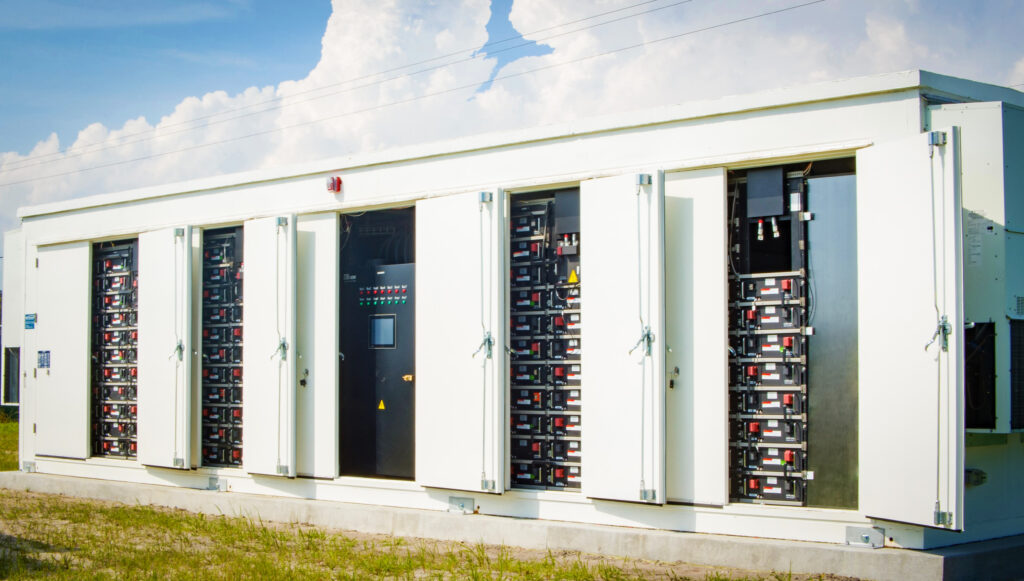Why Texas is Breaking Energy Storage Records—and How Businesses Can Benefit

Everything is bigger in Texas—including its demand for energy storage systems (typically in the form of battery storage). Texas has rapidly expanded its energy storage capacity, setting new records and positioning itself as a leader in the transition to a more efficient, cost-effective, and resilient power grid.
This growth is being fueled by an increasingly urgent need for grid reliability amid increasing demand and aging infrastructure, a surge in renewable energy generation, and a favorable market structure that encourages investment in energy storage. It’s also being fueled by high energy price volatility, which negatively impacts the industrial sector.
The Electric Reliability Council of Texas (ERCOT) manages the state's electric grid, which faces multiple challenges, including extreme weather events, capacity shortfalls due to increased demand, intermittent large-scale renewable generation, and unplanned generator downtime. These challenges result in high energy price volatility that creates challenges for businesses. Beyond ERCOT, local distribution utilities play a key role in how businesses experience and manage energy costs.
As ERCOT and Texas utilities face mounting pressure to improve reliability and keep prices down, some businesses are turning to on-site battery storage to keep costs low and hedge against future volatility. In this blog, we’ll explore what’s behind ERCOT’s energy price volatility, and how on-site renewables—battery storage and solar photovoltaics (PV)—can help businesses manage costs.
Why Texas? The Key Drivers Behind Energy Storage Growth

In 2024, Texas added nearly 78 gigawatts (GW) of transmission-connected wind, solar, and battery energy storage capacity to the grid, with projections indicating that battery energy storage alone could make up a growing share of this capacity, contributing significantly to grid stability and reliability. Total transmission-connected renewable capacity, including energy storage, is projected to exceed 102 GW by the end of 2025. This impressive growth underscores Texas’ expanding leadership in the energy storage sector, which has been propelled by several factors:
⚡ Extreme Weather and Grid Resilience Needs: As we know, the Gulf Coast region frequently experiences tropical cyclones, hurricanes, heatwaves, and other extreme weather events, which can lead to significant disruptions in electricity. Texas has faced several high-profile grid reliability challenges in recent years, including Winter Storm Uri in 2021 and record-breaking summer heat waves. Energy storage provides a critical tool for peak demand management and emergency backup power, helping to avoid blackouts and price spikes.
💰 A Competitive Market Structure: Texas’ deregulated energy market, managed by ERCOT, allows energy storage systems to compete on a level playing field with other resources, incentivizing rapid development. Further, ERCOT’s independent grid structure limits its ability to import power from neighboring regions, making it more vulnerable to supply shortages during periods of high demand.
📈 Surging Renewable Energy Capacity: Texas leads the U.S. in wind generation and is experiencing rapid solar PV adoption. The state’s solar energy capacity is projected to surpass coal generation for the first time in 2025, further reinforcing the need for energy storage to manage variability.
🔋 Lower Battery Costs: Advances in lithium-ion technology and increasing domestic manufacturing have driven down costs, making battery storage systems more financially attractive.
These key drivers highlight just how integral battery storage can be in managing Texas’ evolving energy landscape. With extreme weather events becoming more frequent and energy demand rising, energy storage is stepping in to provide businesses flexibility, resilience, and cost savings.
Unless there is significant development in infrastructure—and a rapid increase in the amount of energy storage on the grid—rolling blackouts and partial outages run the risk of becoming a new normal and the cost of energy will continue to experience extreme price volatility.
In the interim, industrial-scale battery storage can help businesses reduce costs and insulate themselves against energy price volatility.
How On-Site Renewables Can Insulate Businesses in ERCOT Against Energy Price Volatility
The challenges facing ERCOT are being felt by utility customers, especially those customers who use the most energy (i.e. the industrial sector). For Texas businesses looking to insulate themselves against volatile energy costs—or hedge against future cost increases—energy storage is a hassle-free solution.
What makes energy storage—most often in the form of battery storage— the “Swiss Army knife” of solutions is its ability to store energy when it’s not needed (or there is a surplus) for when it is needed most (typically the hottest hours of the hottest days of the year). These hours, often referred to as “grid peaks,” are often the basis of allocating system costs.
One strategy to mitigate these costs is through reducing consumption during the four coincident peaks (4CP), utilized by ERCOT and allocated to customers by local distribution utilities to allocate transmission system costs to distribution utilities. By linking transmission costs to peak load percentage, the 4CP mechanism incentivizes companies to reduce consumption during peak periods, thereby potentially lowering their share of transmission costs in the subsequent year. This is frequently referred to as “peak shaving.”
The installation of an on-site battery energy storage system can help reduce transmission demand charges by reducing your facility’s consumption during the 4CP hours. Additionally, the battery can perform energy arbitrage when real-time prices are high. Beyond cost savings, businesses using energy storage also help reduce stress on the grid. By relying on stored energy during peak periods instead of drawing from the grid, businesses enhance overall system reliability and support the utility in managing demand fluctuations more effectively.
Solar PV can also be installed on-site at an energy-intensive business where there is available land to do so. Solar PV provides a hedge against future supply cost increases, shields customers from periodic high prices during the summer, and passively reduces consumption during 4CP hours.

When paired with solar, battery storage systems can also maximize the value of solar PV, known as solar-plus-storage. With solar-plus-storage, the battery storage system is charged with solar energy. Then, it can be discharged onto the grid whether or not the sun is shining. In addition to reducing energy costs, solar-plus-storage provides a hedge against future cost increases (both supply and transmission).
A leading provider of energy storage solutions in North America, Convergent Energy and Power (Convergent) charges its battery storage systems when the grid is not constrained, and energy is at its cheapest (typically at night); we discharge the battery storage system when energy is most expensive, and most in-demand based on real-time prices. This can save businesses around seven figures per year and cut carbon emissions, without curtailing operations.
Plan Ahead, Hedge Against Future Energy Price Volatility, and Connect with Convergent.
If your business is considering a battery storage or solar-plus-storage solution to help meet your hedge against current and future energy price volatility, lower your energy bill, insulate against short-term power quality concerns or increase your renewable energy usage, you are in good company. Businesses like Shell, Ford, and National Grid have done just that with a development partner (spoiler alert: that partner is Convergent).
With Texas being one of the nation’s leaders in energy storage growth, now is the time for businesses to capitalize on this momentum and take control of their energy future. For over a decade, so Convergent has gained deep expertise by working closely with industrial businesses to take the hassle out of on-site renewable solutions by building, owning, and operating systems on our customers’ behalf.
Here at Convergent, we finance the system, so there is no CapEx required on the part of our customers.
If you’re looking to future-proof your facility with an on-site battery storage or solar-plus-storage system, schedule a free, no-obligation introductory call with our team today.


